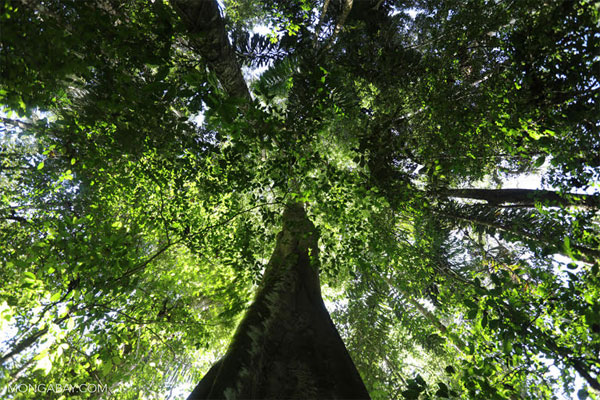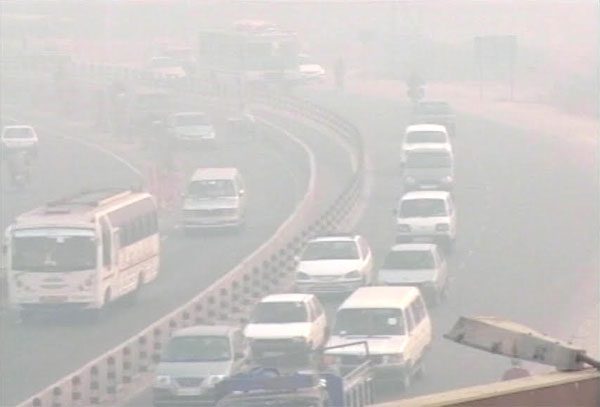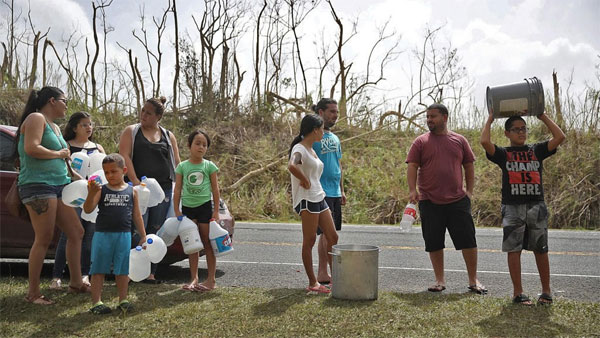Newsletter - October 4, 2017
2016: India's GHG emissions rose by 4.7%, coal consumption by 4%
Data: ‘Significant’ rise in India’s emissions, global CO2 emissions remain ‘static’
Emissions set to grow 17% through 2025
Meanwhile, GHG emissions from the 25 biggest international oil and gas firms are set to grow another 17% through 2025. The new report suggests – cost wise – that the companies will get away with this, since they only stand to lose about 2% of the value of their production assets (because of the $40 per ton carbon price).EV buyers tend to buy second, bigger car - eroding the goals of fuel economy by up to 60%
India or abroad, is it make or break for car companies?
Pushing the 2030 EV target, the government will buy 10,000 new electric vehicles from Tata Motors in a bid to replace fossil-fuel cars at government offices over the next 3 to 4 years. With 500,000 government vehicles, and growing air pollution, experts say ‘Centre needs to do a lot more’. Nissan and India’s Mahindra & Mahindra lost the contract to Tata.
Not so fast?
Railway minister Piyush Goel rolled back decision to exit $2.5 billion deisel engine deal, for all-electric engines, after GE put government on notice.
Karnataka makes EV move
Taking cue from Centre, Karnataka cleared its Electric Vehicle & Energy Storage policy becoming the first state to have EV policy in place. It expects investments worth Rs31,000 cr and create around 55,000 jobs. Businesses don’t want to miss the EV bus either. Tata, SoftBank and others are backing Uber rival Ola with $2 billion in new funding. SoftBank is considering a multibillion dollar investment in Uber too. Meanwhile, Suzuki – with fellow Japanese firms Denso and Toshiba – plans to make lithium-ion batteries in India.
$100 million battery deal
Amid the policy rush, Japan’s SoftBank plans to invest $100 million in Reva founder Chetan Maini’s firm Sun Mobility to develop EV batteries and build charging stations. Nonauto firms are also entering the fray. Steel giant JSW has set a 2020 EV date. Mukesh Ambani (CEO, Reliance Industries) is also planning lithium-ion battery factories and charging stations.
China’s EV deadline for carmakers
Globally, vacuum cleaner maker Dyson plans a ‘radical’ electric car by 2020. And BHP Biliton, the world’s largest mining conglomerate, sees 2017 as the ‘tipping point’. Like India the car companies abroad dragged their feet, but now they are being dragged into EVs. GM is the latest entrant. But none can match China’s ‘amazing EV aggression’, and its 2019 EV deadline for automakers.
Buyers ‘defeating the purpose’
However, is the consumer’s interest in EVs half-hearted? Data shows that EV buyers actually tend to buy a second, bigger car that’s gasoline or diesel fueled – and thereby eroding the goals of fuel economy by up to 60%.
An uninterrupted canopy makes it difficult for satellites to pick up the degradation underneath
Study: Forests degraded by humans, emitting CO2, not acting as carbon sink anymore
Tropical forests are so badly degraded they have become a source rather than a sink of carbon emissions, according to a new study that highlights the urgent need to protect and restore the Amazon and similar regions.
Researchers found that forest areas in South America, Africa and Asia – which have until recently played a key role in absorbing greenhouse gases – are now releasing 425 teragrams of carbon annually, which is more than the emissions from all the vehicular traffic in the United States.
The study went further than any of its predecessors in measuring the impact of disturbance and degradation, the thinning of tree density and the culling of biodiversity below an apparently protected canopy – usually as a result of selective logging, fire and drought.
This can reduce biomass by up to 75%. But it is more difficult for satellites to monitor than deforestation (the total clearance of foliage) because, when viewed from above, the canopy appears undisturbed despite the depletion underneath.
What will another 4 years of Merkel mean for Germany’s battle against carbon emissions? Analysts assess her climate record at home to be a disaster.
Merkel, the ‘climate chancellor’ brokered the first UN climate agreement, persuaded the G7 leaders to pledge to kill fossil fuels by 2100, created Germany’s Energiewende– energy transition. Yet she’s seen as ‘leading eco-vandal’.
Merkel’s ‘weakness’ for Auto lobbyists
Merkel’s biggest flaw:’weakness’ towards German auto lobbyists. They got the EU to replace petrol engines with diesel claiming, falsely, that diesel engines produce less carbon dioxide than petrol ones. In 2013, Merkel blocked EU plan to limit CO2 emissions from cars by 2020. She struck secret pact with David Cameron, to defy EU fuel laws. Her party got €700,000 donation from BMW. In 2014, when the European commission warned that German diesel engine emissions were far higher than what they claimed, Merkel defended the deiselgate.
In 2007 she forced EU to choose disastrous option of biofuel to replace fossil fuels. The European biofuel rule is seen as the cause behind world’s greatest environmental disasters: the burning of Indonesian rain forests and their replacement with oil palm.
Merkel and Coal
Greenhouse gas emissions in other EU nations have fallen sharply, but not in Germany. Merkel has repeatedly blocked the environment ministry’s efforts to set a deadline for an end to coal power. Lignite, one of the dirtiest coal fuel supplies 40% of Germany’s electricity.
The ambitious plan hinges heavily upon profitable operations by the DISCOMS
Reality Check: India to electrify every home by 2018 using solar, storage, LEDs
The Centre’s $2.5bn Saubhagya power plan to electrify all households by December 2018 may not be easily achievable through the chronically loss making power distribution companies (DISCOMS). Experts are calling it a hype.
This is because the DISCOMS’ losses are estimated to be at over $61mn. They sell power to the farming sector at below cost, and suffer massive waste under the ‘open access’ system that allows (industry) clients the right to buy power from producers other than the state DISCOM. This has resulted in power generators being unable to sell all of the power they generate, which has had them running at nearly half their installed capacities.
The power for all plan could act as a “major stimulus” for India’s power sector, with power demands expected to swell by 35%, even though CRISIL has ruled out any increase in electricity demand before 2022. State governments are being encouraged to take up an increasing share of the DISCOMS’ losses each year, and the additional demand of 28,000 MW means that the DISCOMS can potentially garner $3.6bn of additional revenue.
Also, the government is doing away with any “free power” to customers. For remote locations, instead of extending the grid, the government will provide 200-300W solar panels, LED lights and DC fans and charging points to the end users, along with 5 year maintenance.
IMF: 1°C rise in temperature can cause India's per capita output to fall by 1.33%
IMF study: Indian economy among the worst hit by climate change
A recent climate impacts study by the International Monetary Fund shows countries in hotter regions as the worst victims of global warming. India’s per capita output is expected to fall by 1.33%. Bangladesh, Pakistan, Sri Lanka, Indonesia and Malaysia will be similarly affected. The impact on the developed nations, in temperate regions, will be negligible. China’s growth is also estimated to not be much effected. Northern nations such as Russia, Norway and Canada will see their growth improve.
Is India prepared for these predictions? Consider this: while countries are successfully preventing flood related deaths, they are increasing in India. Experts also say, grotesque global economic inequity has triggered a climate crisis and threatens a ‘horrific death for all’.
Air Pollution: North India breathes heavy, FIFA cautious
The last two weeks of September witnessed relatively unsafe air quality across the country. The AQI score by the Central Pollution Control Board indicated that Ghaziabad (AQI 217), Kanpur (AQI 200), Noida (AQI 144), Moradabad (AQI 142), Delhi (AQI 131), had the worst air quality, with PM 10 and PM 2.5 being the main culprits.
On several days Thane, Jodhpur and Nagpur experienced hazardous levels of air quality. Ludhiana, on September 21, had severe levels of air pollution with toxic NO2 levels being the primary reason.
Delhi is braced for potentially dangerous air pollution levels in winter due to the rampant burning of pet-coke, the city’s extremely lax pollution standards and crop burning in neighbouring states.
Pet-coke burning is forbidden in the US because of its sulphur and toxic metal laden fumes – including vanadium, nickel and iron – in India the fuel (derived from heavy oils) is burned freely by coal power plants. Also, pet-coke imports into India have grown by 23% each year for the last five years, and its fumes are a major cause of smog in the capital.
The annual crop burning in Haryana and Punjab worsens the problem: over 30 million tons of stubble from winter crops. It accounts for 12-60% of Delhi’s air pollution. PUC certificates can be easily bought in Delhi NCR, so much so that the EPCA reported that miniscule 2% of all vehicles tested failed their pollution checks.
FIFA not convinced
Adding to the city’s embarrassment, FIFA has stated that none of the Under – 17 World Cup matches will be played in Delhi after Diwali (October 19) as it is not convinced of the goverment’s post-firecracker clean up efforts. An indication of the city’s severe air quality is the fact that today evening (October 3), the PM 2.5 concentration at the city’s busiest junction was reported to be 985μg/m³, over 16 times higher than the prescribed safe limit of 60 μg/m³.
Puerto Rico is grappling with an acute humanitarian crisis in the wake of Hurricane Maria
Climate Change Now: Puerto Rico waits for essential supplies from ‘inefficient’ Trump govt.
12 days after Hurricane Maria struck Puerto Rico, the survivors continue to face an acute shortage of essentials: food, water, fuel, medicine, power and currency. It’s a full-fledged humanitarian crisis compounded by a slow response by the Trump administration. Experts say Puerto Ricans are ‘living climate change right now’.
Tesla ships batteries
Around 97% of Puerto Rico remains without power. Tesla is lending a hand by sending hundreds of its Powerwall systems to supply energy. The island’s hospitals are struggling to keep generators running with limited diesel. Tesla’s batteries can be paired with solar panels to store electricity for the island, whose energy grid may need 6 months to be fully repaired.
Trump spats with outspoken Mayor Cruz
Puerto Rico’s outspoken Mayor’s appeals to the ‘inefficient’ Trump administration went viral as Trump got into in a cantankerous spat with San Juan mayor Carmen Yulin Cruz. In a tweet, he referred to her as “politically motivated ingrates”.
Malcolm Wrigley, Engie's CEO for India
Wind Power: Engie and Abraaj JV eye $1 billion investment in India
French energy firm Engie SA and Dubai-based private equity firm Abraaj Group may jointly invest around $1 billion to build a 1,000 megawatt (MW) wind power platform in India.
The strategy involves bidding for new contracts and making acquisitions. India’s wind sector is transitioning from a feed-in tariff regime to tariff-based competitive auctions.
Abraaj and Engie have identified a 1 GW pipeline of wind power projects in several key states. Foreign investments are crucial for India’s renewable energy industry as the lower cost of foreign capital and the size of the market has helped bring down tariffs. India plans to install 175,000MW of renewable energy by 2022. Of this, 100,000MW is to be solar and 60,000MW wind projects.
Also, the government plans to auction contracts for 20,000MW each of wind and solar power by December. India has an installed wind power capacity of 32.5 GW. The country needs to add 5-6 GW wind capacity every year to meet its 2022 target.










